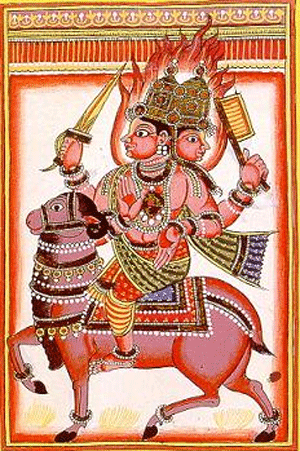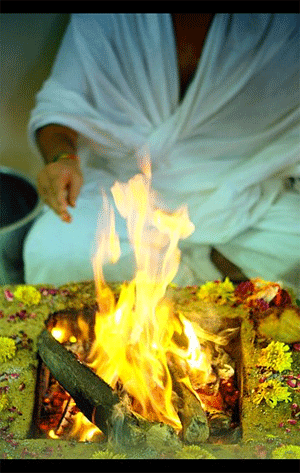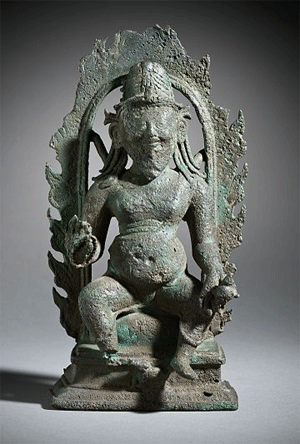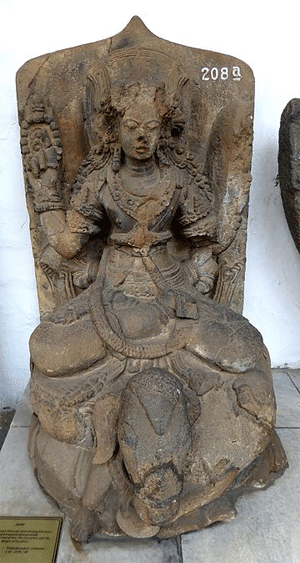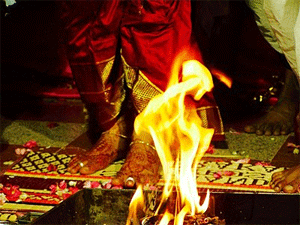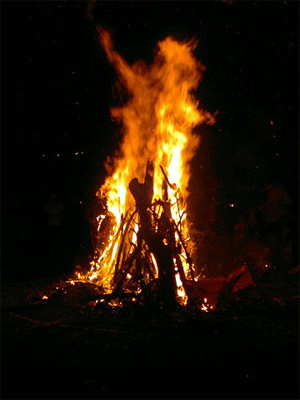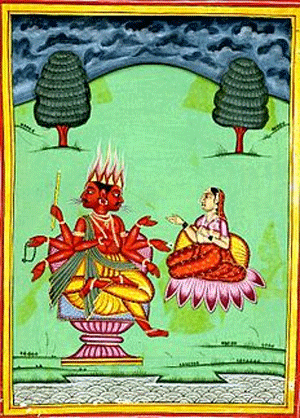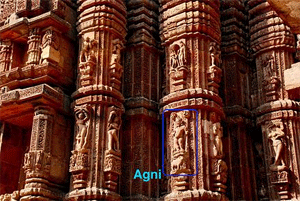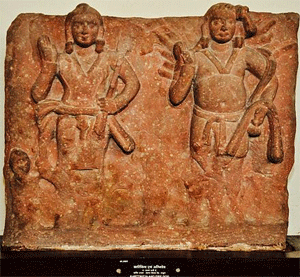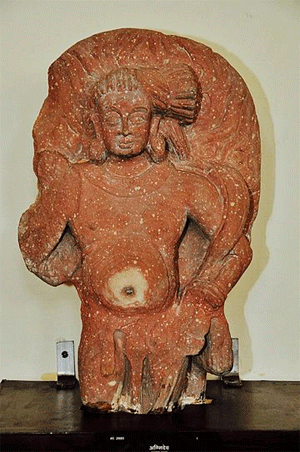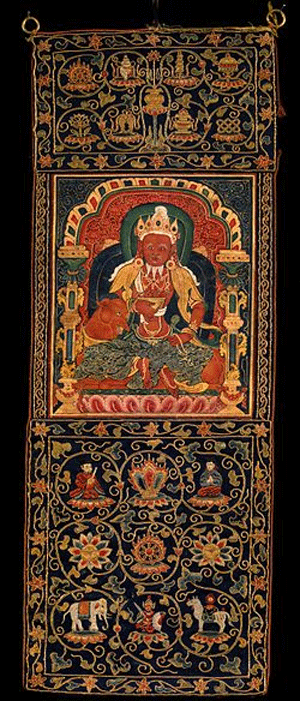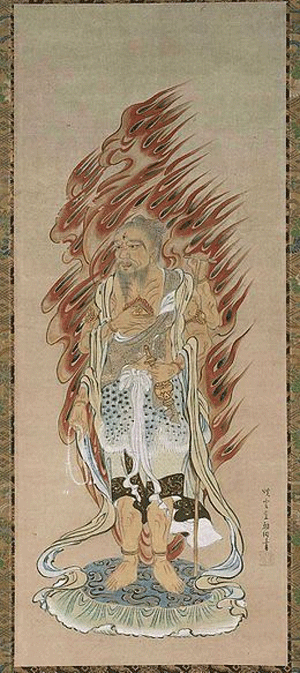by tvWiki.tv
Accessed: 5/10/18
NOTICE: THIS WORK MAY BE PROTECTED BY COPYRIGHT
YOU ARE REQUIRED TO READ THE COPYRIGHT NOTICE AT THIS LINK BEFORE YOU READ THE FOLLOWING WORK, THAT IS AVAILABLE SOLELY FOR PRIVATE STUDY, SCHOLARSHIP OR RESEARCH PURSUANT TO 17 U.S.C. SECTION 107 AND 108. IN THE EVENT THAT THE LIBRARY DETERMINES THAT UNLAWFUL COPYING OF THIS WORK HAS OCCURRED, THE LIBRARY HAS THE RIGHT TO BLOCK THE I.P. ADDRESS AT WHICH THE UNLAWFUL COPYING APPEARED TO HAVE OCCURRED. THANK YOU FOR RESPECTING THE RIGHTS OF COPYRIGHT OWNERS.
Agni Yoga, also called the "Teaching of Living Ethics" or (in Russian) the Zhivaya Etica, is an esoteric teaching founded by the Russian painter Nicholas Roerich (Nikolai Konstantinovitch Rerikh) and his highly adept empathic wife, Helena Roerich (Elena Ivanovna Rerikh). Inspired by the Vedic traditions,as well as by Buddhism and writings of [[H.P. Blavatsky]Theosophical, the Roerichs published the "Agni Yoga" series of books, with contents inspired by the Mahatmas, or Masters of the Great White Brotherhood from their stronghold in the Himalayas, Shambhala. In the early 1920's, the Roerichs attracted a following in New York City, where they built an art museum; in India, where they retired; and in Russia, where their teachings have remained an influential part of the spiritual life.
Agni means "fire" in Sanskrit, and is the name of a Vedic deity. As used by the Roerichs, it refers to a spiritual fire within the heart, or psychic energy, which is seen as the main force on which all of life is based, and may and should be refined and cultivated. The "Yoga" highlighted meanwhile refers not to the familiar physical exercises of Hatha Yoga, or even to any of the philosophical schools like Bhakti Yoga or Raja Yoga, but to a more conscious striving after the will of the Masters, through ideally following the principles of the teaching in one's everyday life as work and service.
Many adherents of Agni Yoga are more likely encountered at the several Roerich museums (in New York City, Moscow, and Naggar, India) and various Roerich centers, as well as on pilgrimage to Mount Belukha, in Russia's Altai region.
History
The Roerichs were involved in the creation of several institutions, most of them in New York City. These included Cor Ardens ["Flaming Heart"] International Art Society (1921); the Master School (later "Institute") of United Arts (also 1921); the first Roerich Museum (1929), on Riverside Drive and 103rd; Corona Mundi (1921), a sister body supporting East-West artistic dialogue and exhibitions; Alatas (1930?), a publishing imprint; and the current Roerich Museum (1949). New York's Agni Yoga Society is an educational nonprofit chartered in 1946.
Nicholas Roerich probably encountered Theosophy during his work on St. Petersburg's Buddhist temple (he did the second-floor windows), which was completed in 1915. The Roerichs did join the Theosophical Society in London in 1920, but distanced themselves from it as conflict over Annie Besant and Krishnamurti raged.
By 1920, the Roerichs were personally receiving messages from Master El Morya. During that same year Frances Grant, and Sina and Maurice Lichtmann joined their circle, which also included the Roerichs' two sons. Nettie and Louis Horch joined the following year. (Interestingly, the Roerich's inner circle has always been predominantly Jewish.)In each case, the new participants were carefully sounded out for their spiritual views, then given a personal message from Master El Morya.
Ruth Drayer describes the revelatory process thus:
"They would sit together and first Nicholas and then later Helena would transmit questions that the students were allowed to ask of Master Morya.... The answers from the Master were written out by Nicholas Roerich on big scrolls of sketching paper." (p. 71)
Some guidance was intended for the Roerichs alone; this was compiled into separate notebooks by Helena Roerich; these notebooks now form part of a special collection at Amherst College. The circumstances by which they left the Roerichs' possession forms a crucial point in the Agni Yoga story.
As the Roerichs returned from their Central Asian expedition (1924-1928), a rift developed among his immediate circle of supporters. In particular the Horches, assisted by Esther Lichtmann (Maurice's sister), apparently came to believe the Roerichs' spiritual claims to be fraudulent. As the major patrons behind the museum (now a 39-story New York skyscraper), the Horches ultimately (in 1937) won legal control of it when it encountered financial difficulties arising from the Great Depression and a tax dispute with the I.R.S.. Along the way its collection of paintings, and the notebooks by Helena, disappeared.
For several decades thereafter the Roerich Museum, at its new site, continued under the direction of Sina Lichtmann (later Fosdick), the Roerich family (except George, the academic) having spent the remainder of their lives in India. The current director of the New York Roerich Museum is Daniel Entin.
Meanwhile, the political thaw in 1980's Russia allowed the Roerich movement (which had long existed underground) to resurface. With support from Mikhail Gorbachev and Raisa Gorbachev (the latter said to have been a devotee), a Roerich Centre was created, and given a palatial headquarters in Moscow. George (Yuri) Roerich donated paintings to museums in Novosibirsk and St. Petersburg, while Svyetoslav Roerich and wife Devika Rani did the same for the Roerich Centre in Moscow. (A dispute emerged over paintings now in the possession of the Museum of Oriental Art, also in Moscow, which the Roerich Centre claims.)
The description so far may give the impression that Agni Yoga is dominated by a few large institutions. Equally important are the several individual teachers, as well as some centers which have been founded: Torkom Saraydarian, "Guru RHH" (Ralph Harris Houston), Joleen Du Bois (founder of Arizona's White Mountain Education Association)...
Teachings
The theology described in the Agni Yoga books can be understood as a special variation on Theosophy. After Madame Blavatsky's passing, the Theosophical movement became divided into a number of distinct groups. Each claimed authorization by the hierarchy of hidden masters, and most of them were suspicious of rival claims.
Several of these "post-Theosophical" groups restored Christian imagery, which Madame Blavatsky had downplayed and even mocked. Among them were the followers of Rudolf Steiner and Alice Bailey. The Agni Yoga books follow a middle ground--repeatedly invoking Christ but alongside other, more traditional Theosophical masters such as M. (for "Morya"), Solomon, Buddha, Thomas a Kempis, Sergius of Radonezh, and Akbar the Great. Christianity is said to have become corrupted after the time of Origen, though the writings do mention the Philokalia with apparent fondness.
By the third book a female redemptrix figure called Mother of the World begins to receive emphasis; this is not from Blavatsky, but recalls a similar mother-figure in the writings of C.W. Leadbeater. We may also discern in it parallels to Marian devotion within Russia, or for that matter Tara devotion within Tibet (a parallel which the writings specifically acknowledge).
Another post-Blavatskean development was the rise of an apocalyptic trend within the Theosophical world. Blavatsky's successor, Annie Besant, aroused controversy with her identification of a young Jiddu Krishnamurti as Maitreya, an eschatological figure originating from Buddhist lore. (Recall that similar apocalyptic trends had been occurring among Christian groups as well.) The writings of Alice Bailey also describe a "New Era" or New Age which is about to begin. Its advent, we are told, will witness terrible destruction through cosmic forces, as well as a glorious new stage in human evolution. Agni Yoga shares these themes.
A third was an emphasis on Shambhala, a legendary Buddhist kingdom associated with the Kalachakra tantra. Blavatsky described it in passing as a headquarters of the Great White Lodge, hidden somewhere within Central Asia (which was then largely unexplored). Alice Bailey's books transform it into a dimension with but a tenuous connection to any earthly location. Agni Yoga strikes a middle ground--on one hand affirming Shambhala's hidden existence somewhere in Central Asia, secure from trespass by the unworthy; yet on the other hand describing its denizens as hardly constrained by mere physical limitations.
M. has many towers and sentinels upon the slopes of the Himalaya.
None without guide shall penetrate the snowy barrier...
== From Leaves of Morya's Garden, I: The Call: par. 133
A fourth trend was an increased knowledge of non-Western religions based on original sources, including charismatic modern practitioners. Theosophy seemingly whetted an appetite for missionaries of Asian religions ranging from Vedanta (the Roerichs admired Ramakrishna, Vivekananda, and Tagore) to yoga to Buddhism. At the same time, an increasing number of spiritual seekers now found it feasible to travel themselves to remote parts of Asia, as the Roerichs did in their expedition between 1924 and 1928.
Finally, early 20th century esotericism developed increasing nationalistic as well as internationalistic ones (e.g. Communism, Esperanto, etc.). The Agni Yoga books are at once patriotically Russian, subversively globalistic (referring for example to an immanent end to nations), and patriotic in favor of a "New Nation" which did not yet exist, and which was identified somehow with Shambhala.
It has been learned that during the 1920's, the Roerichs really did aspire to establish a new country somewhere in Central Asia. Its boundaries were never laid out very precisely, perhaps because the whole enterprise was hopelessly unrealistic; nor was the proposed country's relationship with Russia and other powers spelled out (despite the Roerichs' attempts to negotiate with the Bolsheviks for support). As it happens, the Altaian religion of Burkhanism and the Japanese religion of Oomoto harbored similar desires, but perhaps the most appropriate parallel would be with Mongolia's Baron Ungern von Sternberg.
With that in mind, we are perhaps in a better position to appreciate the major themes of the Agni Yoga books, which distinguish them from other Theosophical literature.
Perhaps the most striking difference is the vividness of its imagery. Consider the following representative passage:
He has transformed the treasure of the chalice
And returns it to you afire.
-- From Leaves of Morya's Garden, I: The Call, par. 21
The image obviously recalls the divine energies present within the eucharist. At the same time, the Agni Yoga writings mention a "Chalice of Buddha" which passed through Central Asia, as another iteration of the Grail theme. Finally, and perhaps most fundamentally, the chalice represents the human heart as it becomes "filled" with spiritual energies.
In the writings these influences are variously likened to "vibrations" or "subterranean tremors"; "electricity"; "new rays"; "radio waves"; a "magnet"; or a "subtle" world, as opposed to our coarse one. Much discussion is given over to "psychic energy" and its cognates. Sometimes the writings describe them as coming from the "Far-Off Worlds." Whether by this is meant physical or spiritual planets is difficult to know.
In any case, the energies of these worlds are capable of bringing healing and enlightenment, provided that our world can prepare itself for receiving them. Some indication of their potency can be gleaned from the books' hints of the life to come in which money will be abolished (Ibid., book II, sec. V. par. 8), racial differences will fade away (Ibid., book I, par. 269), and an International Government is to take charge.
Examples of militant themes abound in the Agni Yoga books. We are asked to be "warriors," and show "fearlessness" in the struggle. We read of a mystical "Shield"--now the shield of Morya, now of "Orion"--which will protect us as we strive to do the will of hierarchy. Faced with such archetypes it is difficult to know whether to trace them to the Christian Desert Fathers, to Theosophical lore surrounding warring lodges of good and evil; or perhaps to some Central Asian model like the Gesar.
Another repeated theme is that of building a "new temple", a "new country", or a "new world." At times this takes on the forlorn trappings of nation- or institution-building. As the books progress, however, it becomes increasingly clear that they apply to the heart, and that the temple to be built will not be one of physical stone. Again and again readers are urged to teach others, work, maintain group harmony, and practice utmost respect for the beliefs of others (a teaching known in Roerich circles as "by thy God").
Divisions
The question of divisions within Agni Yoga is a sensitive one. First, the writings themselves urge unity and cooperation within the group, and discourage criticism of anyone else's teacher (on the "by thy God" principle). Second, not every division has been based on reasons which elevate and uplift all those who contemplate them. And yet, the issue of whom to recognize as one's guru is a most weighty one, which cannot simply be glossed over with an appeal to the ultimate unity of all religions.
Outside of Russia a number of Roerich groups have arisen, with none of them aspiring to group the others into a quasi-denomination.
One thorny issue that has arisen lies in the tendency of many English-speaking esoteric practitioners to recognize the writings of Madame Blavatsky and Alice Baily alongside those of Agni Yoga.
A similar issue has been the appearance of others who claim to channel (or otherwise communicate with) entities such as M. A prominent example would be Elizabeth Clare Prophet, who for many years channeled not only El Morya Khan but also the Roerichs themselves. Many of her books featured cover art by Nicholas Roerich.
Pop Culture Reference
In 1940--before Plastic Man, the Elongated Man, Mr. Fantastic, or Elastigirl--Klaus Nordling created the first comic-book superhero with the ability to stretch his body: theThin Man, who appeared in a short story within Mystic Comics # 4. The hero was alpinist Bruce Dixon, who received crime-fighting training at the hands of alien beings from a Shangri-La type of Himalayan refuge called "Kalahia". Among his new abilities was the power to topographically distort his body (by slipping under a door, for example).
Now "Kalahia" sounds like "Kalagia," a phrase which the Agni Yoga writings translate as "Come to Shambhala!" (In what language is unclear--it may be intended to be Sanskrit, or perhaps Greek, if it is not Senzar.) As far as anyone knows, no other branch of Theosophy refers to this. It is also likely that in the Russian of the Agni Yoga books, the "g" translated a foreign letter "h" (as often happens in loan words like "gamburger", for example).
Other possible Agni Yoga parallels--which would not hold true for other forms of Theosophy, or pop culture artifacts like Shangri-La--include the Kalahians' use of unknown types of radiation, as well as their habit of exchanging scientific information with beings from distant worlds. Also "Olalla," the name of Dixon's romantic interest, sounds like Ulala (now Gorno-Altaisk), the Altaian capital which the Roerichs visited during 1926.
Whether Nordling was ever an Agni Yoga follower is not known. However, we know that he edited the Finnish Society newsletter (Nordling was a native Finn) at a time when the society was headquartered within the old Roerich Museum. This at least constitutes strong circumstantial evidence.
External links
http://www.agniyoga.org
http://www.roerich.org
http://www.whitemountain.org
http://www.roerich.ee
http://www.sangha.net
http://www.agniyoga-ay.com
http://www.agniyoga.cc

